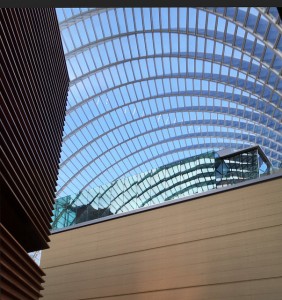Smart glass may spur market
If you’ve sat in the sun inside a building, you know that full sun can heat up a building quickly. That accumulated heat, along with blinding glare, can make some spaces virtually unusable at certain times of the day. Smart glass proposes to change all of that.
Smart glass can reduce energy consumption
Smart glass is self-tinting glass that changes to increase reflectivity when the Sun is at its worst. Self-tinting glass isn’t new. It’s been used for years in small applications. New manufacturing technologies have vastly increased the size of smart glass panels, opening the glass up as an option for use in building construction.
Smart glass can be installed to reduce glare and minimize temperature increases inside a building. In addition, smart glass is active, so it changes its tint based on the solar conditions. Other options, like low-e glass do not change to meet conditions. Smart glass can reduce or eliminate the need for exterior shutters, shades and awnings to control sunlight entering the building.
So far, smart glass has found its greatest appeal in commercial buildings like hospitals, universities and office buildings. Analysts believe that the market for architectural smart glass will double or perhaps triple between 2014 and 2020. The glass is exceptionally interesting for construction applications. The Department of Energy estimates that buildings that use smart glass could reduce their energy consumption by nearly half, and lower their peak electricity demand by one-sixth.
With the glass, operating costs aren’t the only thing that could shrink. Buildings could use smaller HVAC systems, which would lower construction costs, mortgage costs and the cost of rent. The availability of smart glass could also have an impact on productivity. Studies have shown that virtually all workers perform better when they have a view of the outside.
Even though the windows offer superior energy efficiency, initial cost is still a barrier to more widespread adoption. The glass costs about $100 per square foot, but when compared to both its energy-saving potential, and the need to dress ordinary glass with curtains, shutters or blinds, the cost-benefit analysis often works in favor of smart glass.
Glassprimer™ glass paint offers a cost-effective, UV-resistant option to create opaque or translucent glass, at about $1.00 per square foot. Glassprimer™ glass paint comes in a wide variety of colors, and can be color-matched to any major paint manufacturer’s paint palette. It bonds permanently with the glass and will not peel, fade or chip.
If you’d like more information about Glassprimer™ glass paint, please visit the rest of our site. If you’d like to purchase Glassprimer™ glass paint, please visit our online store .
Wendy Lefkowich, via Flickr.com

